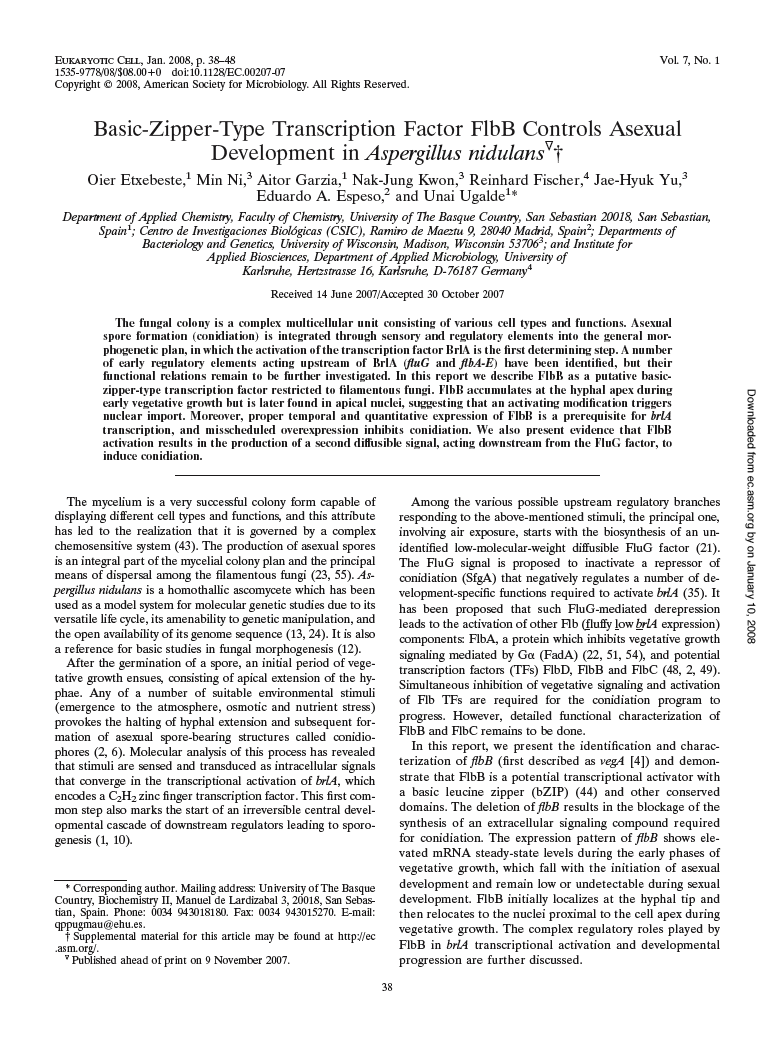Etxebeste et al. 2008
The bZIP-type transcription factor FlbB controls asexual development in Aspergillus nidulans. Eukaryot. Cell, 7(1):38-48.
Etxebeste, O., Ni, M., Garzia, A. Kwon, N.-J., Fischer, R., Yu, J.-H., Espeso, E.A. & Ugalde, U.
Abstract
The fungal colony is a complex multicellular unit consisting of various cell types and functions. Asexual spore formation (conidiation) is integrated through sensory and regulatory elements into the general morphogenetic plan, in which the activation of the transcription factor BrlA is the first determining step. A number of early regulatory elements acting upstream of BrlA (fluG and flbA-E) have been identified, but their functional relations remain to be further investigated. In this report we describe FlbB as a putative basic-zipper-type transcription factor restricted to filamentous fungi. FlbB accumulates at the hyphal apex during early vegetative growth but is later found in apical nuclei, suggesting that an activating modification triggers nuclear import. Moreover, proper temporal and quantitative expression of FlbB is a prerequisite for brlA transcription, and misscheduled overexpression inhibits conidiation. We also present evidence that FlbB activation results in the production of a second diffusible signal, acting downstream from the FluG factor, to induce conidiation.

